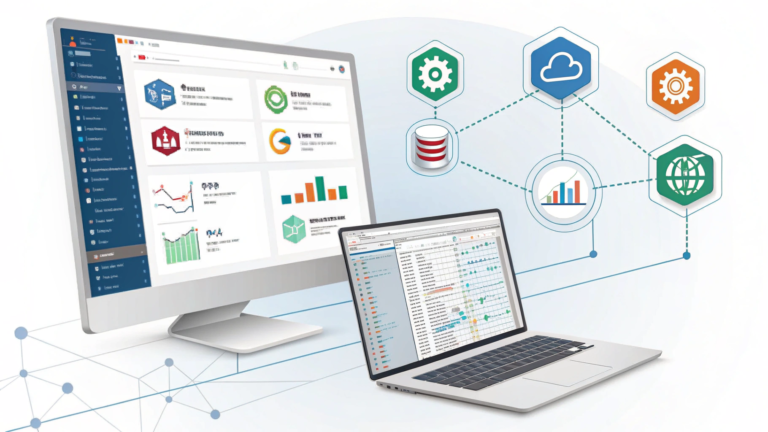
The world of finance has been evolving at an unprecedented pace, with new investment products emerging to cater to a broad range of investor needs.
One of the most notable innovations in recent years has been the rise of Exchange-Traded Funds (ETFs). Offering low costs, diversification, and ease of access, ETFs have become a go-to investment tool for both novice and seasoned investors alike. Fintechzoom.com, a trusted financial news and data platform, has played a pivotal role in providing timely updates and in-depth analysis on ETFs, helping investors navigate this growing market.
This article explores the ETF market, its rise to prominence, its potential impact on the future of investing, and how Fintechzoom.com contributes to keeping investors informed with real-time data and expert insights.
What Are ETFs?
An Exchange-Traded Fund (ETF) is an investment fund that holds a collection of assets, such as stocks, bonds, or commodities. These funds are traded on major stock exchanges, just like individual stocks. ETFs provide investors with an easy way to diversify their portfolios, as they typically contain a basket of assets that track a specific index, sector, commodity, or geographical region.
The key feature of ETFs is their ability to be bought and sold throughout the trading day at market prices, similar to individual stocks. Unlike mutual funds, which are priced once at the end of each trading day, ETFs offer real-time pricing, which appeals to traders and long-term investors alike.
The Rise of ETFs: Why They’re Popular
ETFs have surged in popularity over the past decade. Here’s why they have become a go-to investment option for many:
1. Diversification
ETFs allow investors to gain exposure to a wide range of assets in a single transaction. For example, by investing in an ETF that tracks the S&P 500 index, an investor automatically gains exposure to 500 large U.S. companies, which helps reduce the risks associated with investing in individual stocks.
2. Cost-Effective
ETFs tend to have lower expense ratios compared to mutual funds. Since they are passively managed (in many cases), their management costs are typically lower. Additionally, there are no sales loads or commissions when buying or selling most ETFs, which makes them a more cost-efficient investment vehicle.
3. Liquidity
Unlike mutual funds, ETFs can be traded throughout the day at real-time prices, which makes them more liquid. Investors can buy and sell ETFs at any point during market hours, allowing for greater flexibility and quick adjustments to market changes.
4. Transparency
ETFs generally provide a high level of transparency, as their holdings are disclosed on a daily basis. This allows investors to know exactly what assets they are investing in, which is not always the case with mutual funds or other investment vehicles.
5. Tax Efficiency
Due to the unique structure of ETFs, they tend to be more tax-efficient than mutual funds. ETFs typically do not trigger capital gains taxes unless the investor sells the ETF. This makes them attractive for long-term investors looking to minimize their tax burden.
The Role of Fintechzoom.com in the ETF Market
Fintechzoom.com is a leading financial news and data platform that offers real-time updates and analysis on a variety of financial products, including ETFs. Investors turn to Fintechzoom for in-depth coverage of the latest ETF trends, performance reviews, market forecasts, and expert opinions. Here’s how Fintechzoom has positioned itself as an essential resource in the ETF market:
1. Real-Time ETF Data
Fintechzoom provides up-to-the-minute data on the performance of individual ETFs, including price movements, volume, and historical performance. Investors can use this data to track how their investments are performing and make timely decisions based on market conditions.
2. ETF Market Analysis
Fintechzoom.com regularly publishes expert analysis and insights on the broader ETF market, offering articles on the top-performing ETFs, emerging trends, sector ETFs, and investment strategies. This helps investors stay ahead of the curve and identify opportunities in the market.
3. ETF Educational Resources
For new investors, understanding the mechanics of ETFs and how they can fit into an overall investment strategy can be challenging. Fintechzoom offers educational content to help readers understand how ETFs work, the different types of ETFs available, and how to incorporate them into a diversified portfolio.
4. Comprehensive ETF Coverage
From sector ETFs to thematic ETFs and international ETFs, Fintechzoom covers all segments of the ETF market. It provides news on popular ETFs such as SPDR S&P 500 ETF (SPY), Vanguard Total Stock Market ETF (VTI), and iShares MSCI Emerging Markets ETF (EEM), as well as niche ETFs targeting specific industries or investment strategies.
Types of ETFs Available
The ETF market is vast and offers a wide variety of products that cater to different investment goals. Some of the most common types of ETFs include:
1. Stock ETFs
Stock ETFs track the performance of a specific index or sector. Examples include the S&P 500 ETF, which tracks the 500 largest U.S. companies, and the NASDAQ-100 ETF, which tracks the 100 largest companies on the NASDAQ exchange.
2. Bond ETFs
Bond ETFs invest in bonds and can provide regular income through interest payments. They are popular among conservative investors looking for stable returns. An example is the iShares 20+ Year Treasury Bond ETF.
3. Commodity ETFs
Commodity ETFs invest in physical commodities like gold, oil, or agricultural products. They allow investors to gain exposure to the price movements of commodities without physically buying the commodity itself.
4. Sector and Industry ETFs
These ETFs focus on specific sectors of the economy, such as technology, healthcare, or energy. Examples include the Technology Select Sector SPDR Fund (XLK) and the Health Care Select Sector SPDR Fund (XLV).
5. Thematic ETFs
Thematic ETFs focus on trends or themes, such as renewable energy, artificial intelligence, or ESG (Environmental, Social, and Governance) investing. These funds aim to capitalize on emerging trends or societal shifts.
6. International ETFs
International ETFs offer exposure to global markets outside the U.S. These can be region-specific (e.g., European ETFs) or country-specific (e.g., China ETFs).
Trends Shaping the ETF Market
As the ETF market continues to grow, several key trends are influencing its evolution:
1. The Rise of Thematic and ESG ETFs
There has been a surge in demand for thematic and ESG-focused ETFs. Investors are increasingly looking to align their investments with their personal values, focusing on sustainability and social responsibility.
2. Smart Beta ETFs
Smart Beta ETFs combine passive and active management strategies to target specific factors, such as value, momentum, or low volatility. These ETFs have become increasingly popular as they provide exposure to well-researched investment factors.
3. Growth of Fixed-Income ETFs
Bond ETFs have gained popularity as investors look for yield in a low-interest-rate environment. Fixed-income ETFs are a great way for investors to diversify their portfolios while generating income.
4. Low-Cost ETFs
With the rise of commission-free trading and the growing popularity of robo-advisors, low-cost ETFs have become even more attractive to investors seeking affordable exposure to various asset classes.
5. Increased Adoption by Institutional Investors
Institutional investors are increasingly adopting ETFs for portfolio diversification and tactical asset allocation. This has driven innovation in the ETF market and broadened the range of products available.
FAQs
1. What is an ETF?
An ETF is a type of investment fund that holds a diversified portfolio of assets, such as stocks, bonds, or commodities, and trades on stock exchanges like individual stocks.
2. How do ETFs work?
ETFs work by pooling money from investors to buy a basket of assets. Investors can buy or sell shares of the ETF on a stock exchange, and the ETF’s price fluctuates throughout the trading day.
3. What are the benefits of investing in ETFs?
ETFs offer diversification, low costs, liquidity, transparency, and tax efficiency. They are a flexible investment vehicle suitable for both short-term traders and long-term investors.
4. Are ETFs safe investments?
ETFs are generally considered safe because they provide diversification, but the risk depends on the underlying assets. Sector or thematic ETFs may be more volatile compared to broad-market ETFs.
5. Can I buy ETFs through Fintechzoom?
Fintechzoom provides information and news on ETFs, but you must buy and sell ETFs through a brokerage account.
6. What is the difference between ETFs and mutual funds?
ETFs are traded on exchanges like stocks, offering real-time prices, while mutual funds are priced at the end of each trading day and typically require higher fees.
7. How can I invest in ETFs?
You can invest in ETFs through a brokerage account by purchasing shares on a stock exchange.
8. Are there any tax advantages to investing in ETFs?
Yes, ETFs tend to be more tax-efficient than mutual funds due to their structure, as they usually don’t trigger capital gains taxes unless the investor sells their shares.
Conclusion
The ETF market has revolutionized the way investors approach diversification and portfolio management. With their low costs, flexibility, and broad market exposure, ETFs have become an essential tool for investors in the U.S. and globally.
Fintechzoom.com plays an instrumental role in educating and informing investors about the dynamic world of ETFs, offering real-time data, market analysis, and expert insights to help investors make informed decisions.
As the demand for ETFs continues to grow, staying informed about market trends, new products, and performance updates is crucial. Platforms like Fintechzoom ensure that investors remain equipped with the latest information to navigate the evolving ETF landscape successfully.







